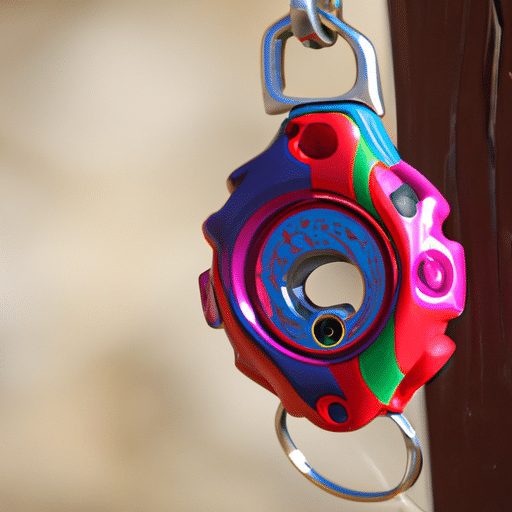In this article, we explore the question that many canine owners have pondered: can you leave a dog collar on in a crate? We all want what’s best for our furry friends, but is it safe to leave their collar on while they are confined? We’ll delve into the reasons why some owners choose to remove the collar and the potential risks that leaving it on may pose. So, if you’ve ever wondered about this dilemma, keep reading to find out the answer!
Can You Leave a Dog Collar On in Crate?
Potential Risks of Leaving a Collar on in the Crate
Leaving a dog collar on in the crate may pose potential risks for your furry friend. One of the main concerns is accidental choking and strangulation. If a collar gets caught on the crate’s bars or any other objects, it can lead to dangerous situations for your dog. Additionally, there is a risk of the collar getting stuck or caught, which can cause panic and distress for the dog. Furthermore, in some cases, dogs may attempt to chew or ingest collar components, posing a threat to their health.
Another risk to consider is the possibility of the collar causing discomfort and inhibiting rest for your dog. Depending on the design and fit of the collar, it may press against the neck and make it challenging for your dog to find a comfortable sleeping position. Finally, leaving a collar on in the crate may obscure hair growth around the neck area and potentially irritate the skin, leading to discomfort or even skin problems.
Safety Concerns for Leaving a Collar on in the Crate
When deciding whether or not to leave a collar on in the crate, it’s crucial to evaluate the type and design of the collar. Some collars may have features that make them safer for crate use, such as breakaway or quick-release mechanisms. These types of collars are designed to release under pressure, reducing the risk of choking or strangulation. Additionally, it’s essential to ensure that the collar fits the dog appropriately and is properly adjusted. A collar that is too loose may increase the risk of getting caught, while a collar that is too tight can be uncomfortable and restrict breathing.
It’s worth noting that puppies and small dog breeds may be at a higher risk of getting into trouble with their collars in the crate due to their smaller size and potential for slipping out. Therefore, it’s crucial to consider their specific needs and assess the safety of leaving a collar on during crate time. Regularly monitoring the condition and wear of the collar is also important to identify any signs of damage or deterioration that could increase the risk of accidents occurring.
Crate Training and Collars
Crate training is a valuable tool for establishing a safe and comfortable space for your dog, but it’s important to consider the role of collars in this process. During training sessions, collars can sometimes become distractions for the dog, especially if they are not used to wearing them. In these cases, removing the collar during crate training exercises may help the dog focus more on the training process without unnecessary discomfort or distractions. However, it’s crucial to strike a balance and gradually introduce the collar as the dog becomes more accustomed to crate training.
Importance of Identification
Identification is an essential aspect of pet ownership to ensure that your dog can be reunited with you in case of escape or loss. Although microchipping provides a permanent form of identification, it’s still important to have visible identification tags on your dog’s collar. These tags typically include contact information such as your phone number or address, making it easier for anyone who finds your dog to reach out to you promptly. In case your dog manages to escape from the crate, having a collar with identification tags significantly increases the chances of a swift reunion.
There are various options when it comes to identification tags, such as engraved or embroidered collars. These types of collars have the benefit of having the identification directly attached, ensuring that it cannot be easily lost or removed. By combining collar identification with microchipping, you provide your dog with the best possible chance of being reunited quickly and safely.
Alternatives to Collars in the Crate
If you have concerns about leaving a collar on in the crate, there are alternative options to consider. One popular choice is using a harness or chest strap instead of a collar. Harnesses distribute pressure more evenly across the chest and back, reducing the risk of choking or injury. Additionally, you can attach identification tags directly to the harness to ensure that your dog’s information is always accessible.
Another alternative is placing identification tags on other accessories, such as a slip lead or a temporary collar. This way, you can easily remove the collar when the dog is in the crate while still providing identification. However, it’s essential to pet-proof the crate environment to prevent these accessories from getting caught or tangled while the dog is unsupervised.
The Role of Microchipping
While collars with identification tags are vital, microchipping provides an added layer of security for your dog’s identification. Microchips are small devices implanted under the dog’s skin, containing a unique identification number linked to your contact information. In case the dog loses its collar or if someone removes it, the microchip offers permanent identification that cannot be lost or tampered with. Microchipping is a simple procedure that can be done by a veterinarian, and it complements collar identification to ensure the highest level of safety and identification for your dog.
Training Commands for Collar Removal
Training your dog to be comfortable with collar removal can be beneficial, especially when it comes to crate time. By conditioning relaxation responses and teaching specific commands for collar on and off, you can help your dog associate the collar with positive experiences and reduce any anxiety or discomfort associated with its removal. Positive reinforcement techniques, such as treats and praise, can be used to reward the dog for calmly accepting collar removal and promote a cooperative mindset.
Leaving a Collar on During Supervision
While there are risks associated with leaving a collar on in the crate, there may be scenarios where it is beneficial to keep the collar on during supervision. For example, if you are actively observing your dog and can quickly intervene in case of any issues, leaving the collar on can provide immediate identification in case of an emergency. However, it’s important to adhere to supervision guidelines and best practices to minimize potential risks while attending to your dog.
The Influence of Dog’s Behavior and Breed
It’s essential to take into account your dog’s behavior and breed when deciding whether to leave a collar on in the crate. Some dogs may be more prone to getting caught or tangled in their collars due to their behavior or physical characteristics. For example, dogs that are more active or prone to scratching may have a higher risk of accidentally getting caught in their collars. Additionally, certain breeds with longer fur or skin folds may be more susceptible to irritation or hair growth obscuration if a collar is left on for an extended period. Considering these factors will help you make an informed decision regarding the use of collars in the crate.
Considerations for Overnight Crating
When it comes to overnight crating, it’s essential to balance safety and comfort for your dog. If you decide to leave a collar on, ensure that it is a comfortable and appropriately fitted collar that minimizes the risk of discomfort or accidents. Additionally, choosing collar and crate materials that are gentle on the skin and fur can help prevent irritation or hair loss. If you have concerns about leaving a collar on during the night, consider using alternative methods, such as a harness or chest strap with identification tags, to provide identification without compromising your dog’s safety or rest.
In conclusion, while the decision of leaving a dog collar on in the crate ultimately depends on various factors, it’s important to carefully evaluate the potential risks and safety concerns involved. Understanding the influence of behavior, breed, and specific circumstances will help you make an informed choice that prioritizes your dog’s comfort, safety, and identification needs. Whether you decide to leave a collar on or explore alternative options, always monitor your dog’s well-being and adjust your approach accordingly to ensure their happiness and security.









































